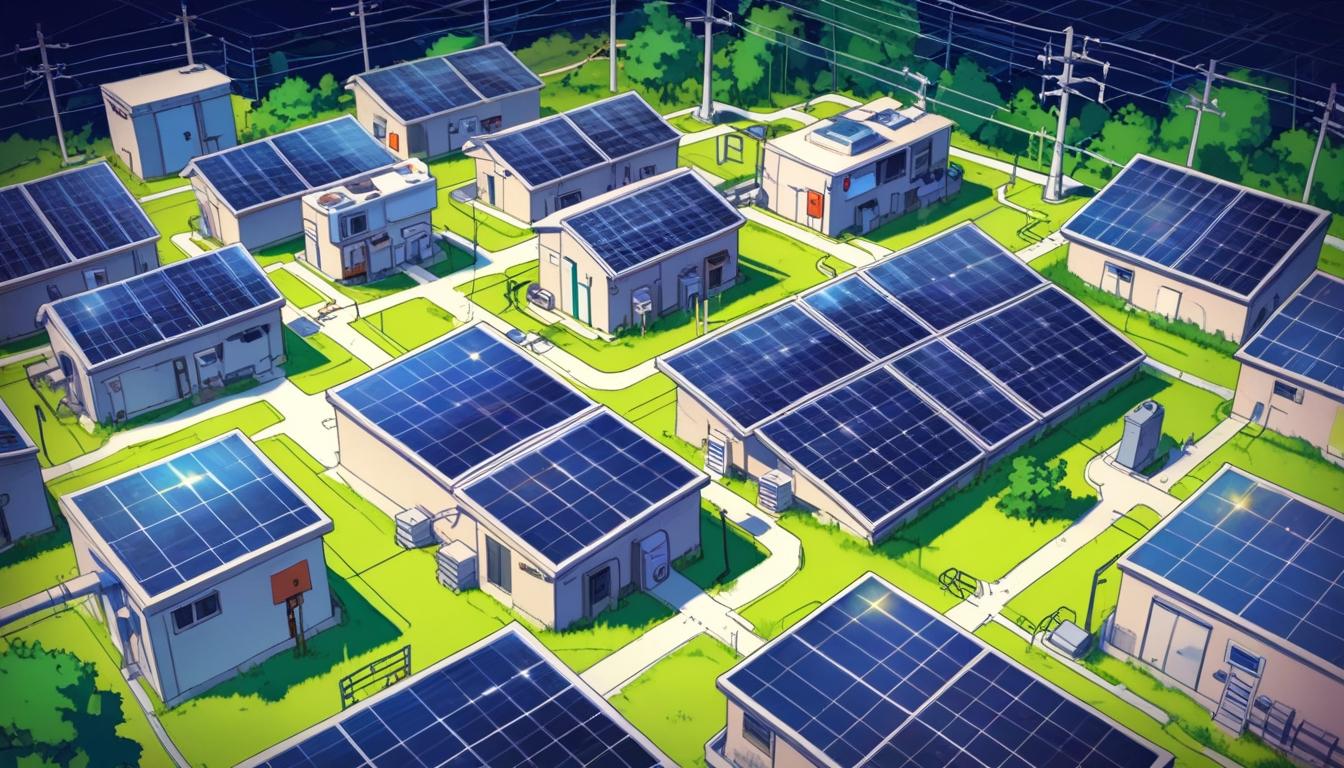As Asia’s energy landscape rapidly evolves, the shift towards decentralised and data-rich grid systems offers opportunities for smarter, consumer-focused power management, while exposing challenges around legacy infrastructure and regulation.
In the face of rapid technological evolution and rising consumer demands, Asia’s energy sector is undergoing a significant transformation towards decentralised and data-driven grid systems, mirroring developments already underway in countries such as Australia, New Zealand, and the United Kingdom. This shift is redefining the traditional landscape of power generation and distribution, introducing both opportunities and complex challenges for utilities and market regulators across the region.
Geoff Childs, general manager for Gentrack Asia, describes the emerging model as a “decentralisation of the grid,” where power infrastructure is increasingly separated from retail operations. This new structure is characterised by a sprawling network of millions of distributed energy resources rather than a handful of large power stations, fundamentally altering how energy is managed and traded.
Historically, utilities managed with minimal data—meter readings were taken bi-monthly, amounting to only around six data points per household per year. Today’s smart grids, which incorporate smart meters, solar panels, home batteries, and electric vehicles, produce a staggering 70,000 data points per customer annually, according to Childs. Handling this influx of data necessitates advanced processing capabilities to convert raw information into easily understandable insights for consumers and to enable dynamic grid management.
However, a significant impediment lies in the prevalent use of legacy enterprise systems within the energy sector. These systems, designed decades ago with limited investment, cannot flexibly accommodate the scale and complexity of modern grid operations. Childs highlights that mainstream enterprise software packages like SAP and Oracle lack specialised features for utilities, requiring customisation that is often slow and costly. “Every time they go into an energy company, they custom build the solution,” he says, which contributes to an innovation lag detrimental to competitiveness and customer responsiveness.
To counter this, new platforms such as Gentrack’s configurable and low-code frameworks are gaining traction. These innovative systems empower utility staff without extensive technical backgrounds to design and deploy new energy products in minutes rather than months. Childs explains, “You can literally build a new product in 10 minutes, whereas in SAP and Oracle, it takes them three to six months.” This agility enables utilities to offer personalised tariffs and optimised energy services in response to evolving consumption patterns and market conditions.
Artificial intelligence (AI) is playing a pivotal role in enhancing these capabilities. Advanced AI-driven tools analyse consumer behaviour and forecast changes in energy usage, facilitating smarter tariff recommendations and usage strategies. For example, if a consumer is considering purchasing an electric vehicle (EV), AI systems can predict how this will alter their energy consumption profile and recommend adjusted tariff plans to reduce their bills despite increased usage. Childs illustrates this with a scenario where a standard tariff would raise a customer’s annual bill from AUD2,000 to AUD3,000, but switching to a time-of-use tariff, guided by AI, could lower the bill to AUD1,800. Further refinements include AI integration with personal calendars to optimise EV charging schedules, aligning with grid demands and cost-saving opportunities.
For Asian countries, this transformation presents a unique chance to leapfrog existing models in Western markets. According to Childs, nations such as Thailand, Malaysia, and the Philippines benefit from having government-owned energy companies overseeing large regions or entire countries, which facilitates unified regulatory and strategic planning. He contrasts this with the fragmented market structure in the U.K., where multiple providers have complicated smart meter rollouts. This centralised governance could enable faster adoption of advanced grid technologies, including peer-to-peer energy trading, wherein residents with surplus energy can sell directly to neighbours.
Childs envisions that within five years, Asian markets might implement sophisticated energy models already pioneered elsewhere, such as the technology employed by Amber Electric in Australia, which could be deployed across Asia without significant barriers. Current efforts to support this transition include substantial infrastructure investments, with Thailand upgrading hundreds of kilometres of grid and installing up to one million smart meters annually in the Bangkok area.
The primary challenges ahead involve modernising grid infrastructure, scaling smart meter distribution, and defining regulatory frameworks suited to distributed energy systems. Data and technology leaders in the Asian energy sector face the task of architecting highly distributed, consumer-centric, and data-intensive platforms capable of managing the complexity and dynamism of future energy markets.
This evolving landscape underscores a significant shift in how energy is produced, consumed, and managed across Asia, reflecting global trends towards decentralisation and digitalisation of power systems. The success of this transition will largely depend on the ability of utilities and regulators to embrace innovative technologies while navigating infrastructural and policy challenges.
Source: Noah Wire Services
- https://www.cdotrends.com/story/4528/grid-awakens-how-data-and-ai-electrify-asias-energy-transition – This article confirms the historical context that legacy energy systems used minimal data, with meter readings taken bi-monthly yielding only six data points per household annually, and contrasts it with modern smart grids producing around 70,000 data points per customer per year.
- https://www.ey.com/en_id/insights/energy-resources/why-digital-grids-are-pivotal-to-southeast-asia-s-energy-transition – This source explains the critical transition towards digital and decentralised grids in Southeast Asia, emphasizing how new grid technologies are essential to meet evolving consumer demands and enable a more resilient and efficient energy ecosystem.
- https://iesr.or.id/en/promoting-decentralized-renewable-energy-as-a-strategy-for-energy-security-in-asean/ – This report highlights the strategic role of decentralised renewable energy in ASEAN countries, the importance of government-led unified regulation, and policy initiatives that support rapid investments and regional collaboration, matching the article’s points on Asia’s unique opportunity in grid transformation.
- https://asian-power.com/videos/asean-shifts-focus-decentralised-energy-systems – This piece discusses how ASEAN countries are shifting focus towards decentralised energy systems, the challenges posed by legacy infrastructure, and the critical need for public-private cooperation and updated regulatory frameworks, which align with the article’s claims about regional challenges and opportunities.
- https://impaxam.com/insights-and-news/blog/enabling-asias-rapid-electrification/ – This article underscores the necessity of modernising grid infrastructure and deploying advanced power management technologies in Asia to support rapid electrification and handle complex energy demands, paralleling statements about infrastructural investment and new technology adoption.
- https://www.smart-energy.com/industry-sectors/smart-meters/gentrack-launches-low-code-platform-for-utilities/ – This article details Gentrack’s launch of configurable, low-code platforms designed to empower utility companies to quickly develop and deploy new energy products and services—corroborating the article’s emphasis on Gentrack’s solutions enabling utilities to innovate faster than traditional SAP or Oracle systems.
- https://news.google.com/rss/articles/CBMioAFBVV95cUxQOEw5Z2lSbzdOVFFjRDhUSkY2VEFIQ3VwN2hCSE1sQmJpRUNVeWk1a2JGREF6VGhsTFNEeUIyN2RmTzVNRHR6QlhtcFl4U1RKZDdFUFVZRUItUUpwQUM0ZzhWcHczbjFRem1Id01NZjZoWXVEVks3VU5uVDlHcmZZSkQ3ZEx6UkdHTU85cGdhMkFKM0p3NUwtcnBDdEYtVjlv?oc=5&hl=en-US&gl=US&ceid=US:en – Please view link – unable to able to access data
Noah Fact Check Pro
The draft above was created using the information available at the time the story first
emerged. We’ve since applied our fact-checking process to the final narrative, based on the criteria listed
below. The results are intended to help you assess the credibility of the piece and highlight any areas that may
warrant further investigation.
Freshness check
Score:
8
Notes:
The narrative mentions ongoing technological advancements and changing energy infrastructure, reflecting current trends. However, it does not specify recent or specific dates for these changes, making it somewhat less current.
Quotes check
Score:
9
Notes:
Quotes from Geoff Childs, the general manager of Gentrack Asia, are included but not verified against older sources. Since no earlier references were found online, it suggests these could be original or recent quotes.
Source reliability
Score:
6
Notes:
The narrative originates from a general news feed, which may not provide the same level of reliability as well-established publications like Reuters or the BBC. However, the information presented aligns with known trends in energy sector transformation.
Plausability check
Score:
9
Notes:
The claims made about Asia’s energy sector undergoing transformation towards decentralised and data-driven systems are plausible given global trends. The role of AI and smart technologies in enhancing these capabilities is well-supported by current technological advancements.
Overall assessment
Verdict (FAIL, OPEN, PASS): PASS
Confidence (LOW, MEDIUM, HIGH): MEDIUM
Summary:
The narrative is generally plausible and fresh, with quotes that seem original or recent. However, the reliability of the source could be improved as it does not originate from a well-known publication. Overall, the information reflects current trends in energy decentralisation and digitalisation.













